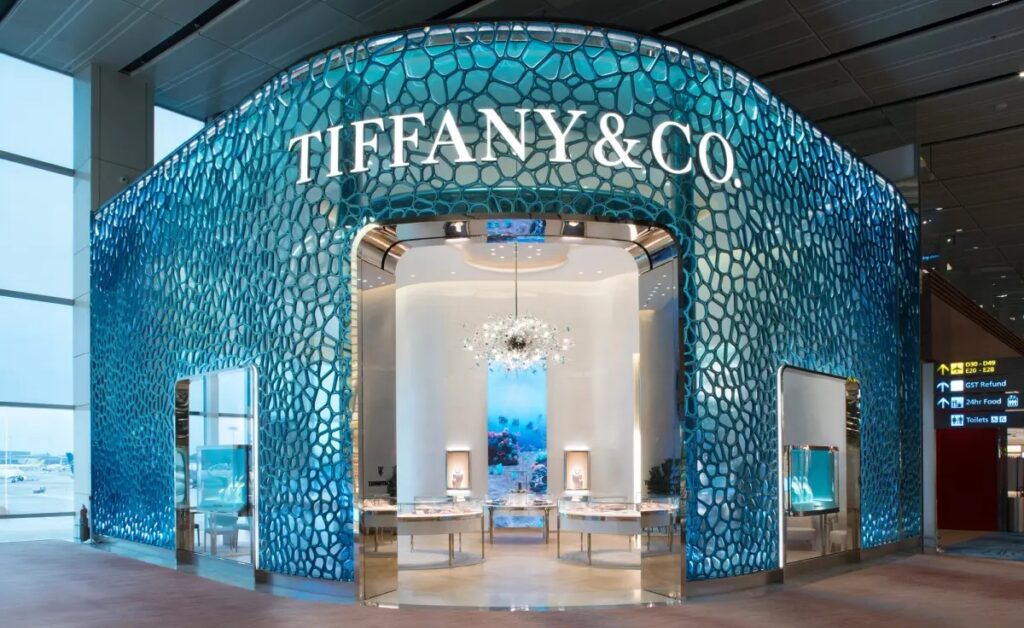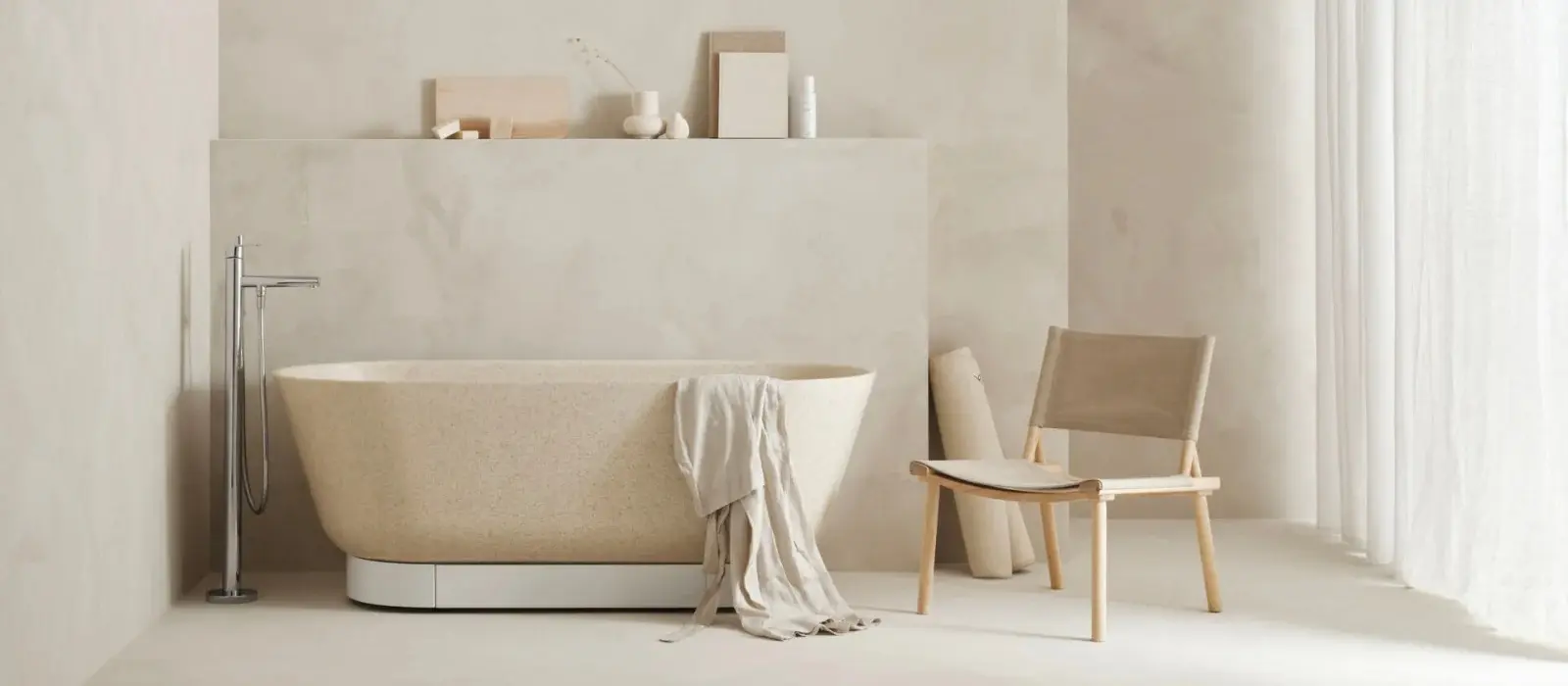
3D Printing with Recycled Materials for Architecture and Retail
3D Printing in Retail Sectors
3D printing with recycled materials is revolutionizing the architecture and retail sectors, enabling a circular design approach that optimizes resources and reduces the use of virgin raw materials. From architecture to luxury retail interiors and flagship stores at the cutting edge of design, this technology not only minimizes waste and environmental impact but also opens new aesthetic and functional possibilities. Below, we explore some representative case studies.
The new Tiffany & Co. store at Singapore’s Changi Airport is an example of how luxury and sustainability can coexist. Designed by the architecture firm MVRDV in collaboration with Aectual, the store features a marine-inspired facade, covered in 3D-printed panels made from recycled plastic derived from reclaimed fishing nets. Inspired by local flora and fauna, the designers sought a theme that resonates with Singapore’s natural environment, opting for a coral-inspired pattern reminiscent of the area’s reef formations. The result is a structure with an organic, cell-like texture covering the store’s facade, set against a screen-printed glass with a color gradient from Tiffany blue to deep blue, evoking the hues of the local ocean.
The MVRDV NEXT team developed advanced algorithms to perfect the coral-inspired motif and ensure the structural stability of the facade under various stressors. To meet stringent airport fire regulations, BUROMILAN added a chemical additive made from seawater to the plastic mixture. Through the use of recycled materials and innovative technologies like 3D printing, this project demonstrates how design and sustainability can coexist to create aesthetically captivating, eco-friendly solutions.

The new NIO flagship store, NIO House Amsterdam, located in a historic building along the Keizersgracht canal, is another example of how 3D printing with recycled materials can transform a space. Once again, MVRDV brought to life a design that merges sustainable materials with a contemporary aesthetic. The facade and interiors were crafted using Aectual Wrap panels. These panels, made from recycled polymers and aluminum sourced from beverage cartons, support a completely circular lifecycle: once used, they can be shredded and reprinted for new projects. The fluted texture and natural colors of the panels, chosen by MVRDV to lend a sense of calm and natural beauty to the space, are customized in various areas of the NIO House to create a dynamic visual experience. By selecting eco-friendly materials and a sophisticated aesthetic, MVRDV and NIO demonstrate that elegant and functional spaces can be created with minimal environmental impact.

3D printing also makes an appearance in the new Pinko outlet inside Rome’s Fiumicino Airport. The fashion brand has transformed the store with an interior facade composed entirely of 3D-printed modules. Inspired by the brand’s iconic swallows and intricate textile patterns, the design creates a “skin” that envelops the entire space, evoking a three-dimensional, mesmerizing tapestry. The complexity of the design required an innovative production approach. To achieve the desired form, prototypes were created using a novel technique in which robots 3D printed directly onto custom molds. This method allowed for precise control and the creation of a truly unique design element. Each wall panel was printed in PIPG, a polymer made from 70% recycled PET-G.
Want to know more about the evolution of 3D printing materials and technologies?
Ask us for a report!



